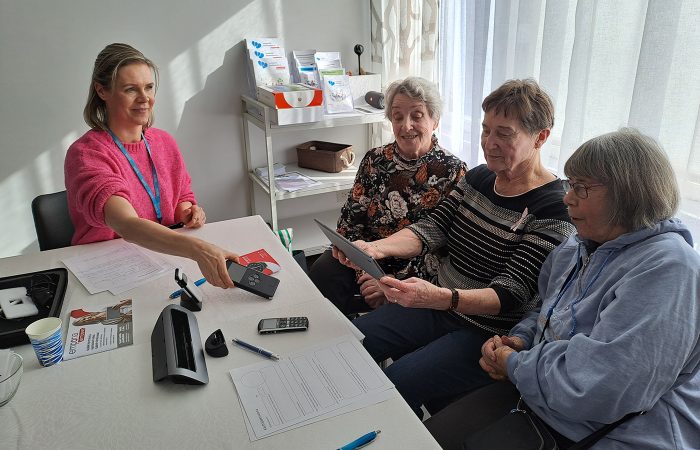We Research: Modernising tech companies with AI and robotics
Improving the productivity of SMEs in the technology sector in Satakunta is a critical step towards improving the region's competitiveness in an increasingly competitive international market. The potential of artificial intelligence is developing at a dizzying pace and already today the various applications it offers can take over normal routine activities. This transformation can often be achieved at a reasonable investment, while freeing up workers' resources for more attention-intensive tasks.
At the same time, automation and robotics and their applications are developing at an increasing pace, while hardware prices are falling. Artificial intelligence tools will also facilitate the deployment of these technologies and widen their range of applications. This will make it easier for SMEs to take advantage of different types of robotic work. The latest area is collaborative robots, whose integration into existing production will lower the threshold to get involved in development.
However, SMEs have limited resources to carry out the necessary research and product/process development. Thus the assistance provided by the research centre and the university, in terms of learning about and testing new technologies, is very valuable.

The main idea behind the TemoTero project is to build a modernisation service that meets the needs of companies in Satakunta as part of the RoboAI Research and Development Center. The service would enable operators, especially in the SME sector, to commission technology experiments carried out by experts and/or student teams in different fields. Experiments can be carried out either in the company's SAMK RoboAI laboratory or on the company's own premises.
At the same time, companies in the Satakunta region will be identified whose production would particularly benefit from automation or the introduction of artificial intelligence and, in the most fruitful case, from a combination of the two. In order to develop the cooperation, it is important to be able to offer services that are really needed in the business world, while at the same time promoting the concept of research work with a university of applied sciences.
The project started with very concrete case studies. Companies were sought out where there were known problems and where new solutions were needed. The identified cases were shared among the experts in the RoboAI laboratory according to the specific areas of expertise of the individuals and the solution models were also discussed with the students of the RoboAI Academy.
In the first step, the initial state of each case was mapped and possible further studies were carried out to understand the constraints that could be encountered in the implementation. In the second phase, a preliminary experimental plan was drawn up on how each phase would be implemented and with what kind of setup it would be carried out. Once the results of the experiments had been obtained, the equipment, the operating model and the test set-up were adapted to achieve the best possible results.
In the final phase, the knowledge gathered from the cases was put into practice by carrying out separate Proof of Concept pilots. The main task of this phase was to demonstrate the validity of the knowledge gained from the experiments in a real-world test situation. The project is still ongoing, so new case studies are actively sought and some of the old ones have already generated new research.
The case examples provide the participating companies with concrete information on how the built applications would work in their production. The information obtained will also be published on the project website, so that as many interested parties as possible can freely access it. The aim is to openly share up-to-date information on ongoing developments, while at the same time providing concrete examples that can be accessed by companies in the region. The aim is to refine the modernisation service to reach an increasing number of companies in the region and to create a channel through which the SME sector can carry out its own RDI activities with the help of SAMK and RoboAI.
Did you know?
- Cobot (collaborative robot) is a robot that cooperates with a human and does not need special safety devices around it. Unlike a traditional industrial robot, it can also be in contact with humans.
- Machine vision is used in industry, for example for quality control and robot control. In medicine, for example, it is used to monitor bio-signals measured from the body. With the support of artificial intelligence, the machine nose can also verify a person's identity.
- AI can automate many routine tasks such as quality control, production processes and machine maintenance. This speeds up work processes and reduces human error.


